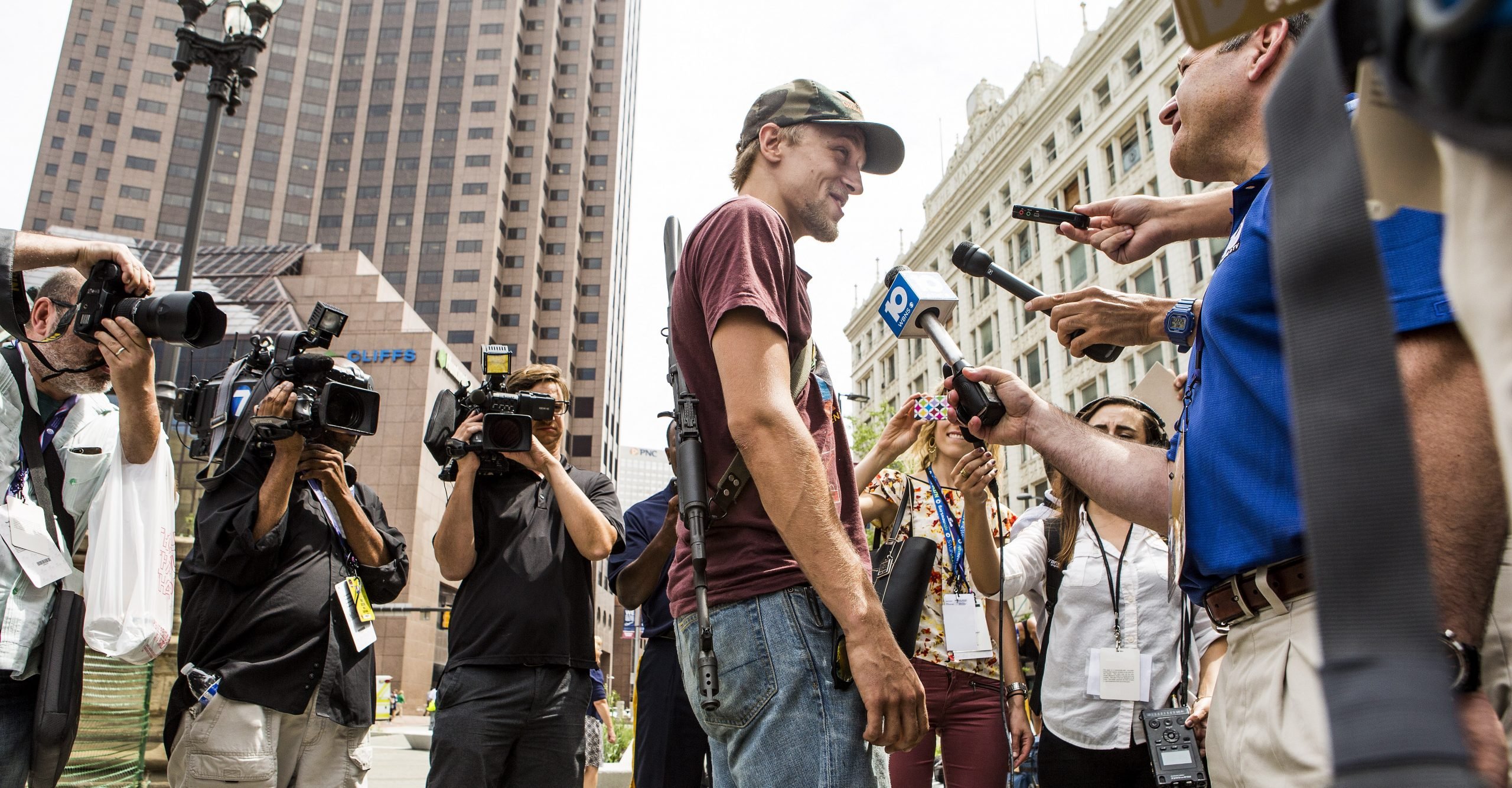A federal appeals court panel ruled this week that laws banning the open carry of firearms violate the Second Amendment. The finding in the case of Young v. State of Hawaii is surprising in that it came from judges on the typically liberal-leaning 9th U.S. Circuit Court of Appeals. It is consequential for its larger conclusion: that the right to armed self defense extends outside the home.
The decision was authored by Judge Diarmuid O’Scannlain, a Reagan appointee, who argues that courts cannot consider the implications of gun laws on public safety, but instead must limit themselves to evaluating a given firearm restriction against the text of the Constitution, legal tradition, and other historical evidence. Then O’Scannlain turns to such precedent — some of which is dubious at best.
Namely, the judge cites a set of gun cases from the antebellum South, when the meaning of armed self defense in public was inseparable from a culture of dueling and fear of slave revolts.
The five court decisions he mines are:
- Bliss v. Commonwealth (Kentucky, 1822);
- Simpson v. State (Tennessee, 1833);
- State v. Reid (Alabama, 1840);
- Nunn v. State (Georgia, 1846);
- and State v. Chandler (Louisiana, 1850).
In those cases, 19th century judges ruled that state gun laws violated a constitutional right to protect oneself in public. But despite what O’Scannlain and likeminded jurists believe, the precedents that they established are not representative of American history and legal tradition writ large.
As legal scholars Eric Ruben of New York University and Saul Cornell of Fordham wrote in 2015, there is good reason to believe that the need for armed self-defense in the antebellum South was unique, and for disturbing reasons. For one thing, it is well documented that white men in that time and place were fixated on personal honor and prone to fighting and dueling. For another, white residents of that society — the only members afforded gun rights — lived in fear of slave revolts or retribution by recently displaced Native Americans. Those white Southerners wanted expansive gun rights, in the event they saw a need to defend against rebellious enslaved people with lethal force.
In the rest of the country during the late 18th and 19th century, public carry was almost unknown. In the North and West, most states strictly regulated or outright banned public carry and few citizens went about armed. For example, in 1836 Massachusetts prohibited public carry except when residents could demonstrate they had good cause to fear assault. Seven other states passed similar laws before the Civil War. None were overturned. Yet O’Scannlain does not mention this equally well-established legal tradition of tightly restricting public carry. His decision claims public carry was universal in early American history. In fact, it was provincial.
O’Scannlain’s cherry picking of historical precedent is a weakness that could lead the full circuit to overturn his decision that open carry is a core Second Amendment right, according to Ruben.
“All the evidence is just from one area of the country. That suggests there is an omission,” Ruben said. “The historical reality is that there’s not a single firearm tradition in this country. There’s most likely not a single nationwide understanding of what the right to keep and bear arms meant during the 19th century.”
There’s another good reason to believe O’Scannlain’s colleagues won’t find his logic convincing: they have rejected it before.
The conservative justice used a nearly identical historical argument, citing the same cases, in his 2014 Peruta vs. County of San Diego panel decision, which declared that a California jurisdiction’s strict limit on concealed carry and ban on open carry violated the Second Amendment.
When the full 9th Circuit later heard the case, the majority reversed his opinion, declaring definitively that the Second Amendment does not protect a right to carry a concealed weapon.


